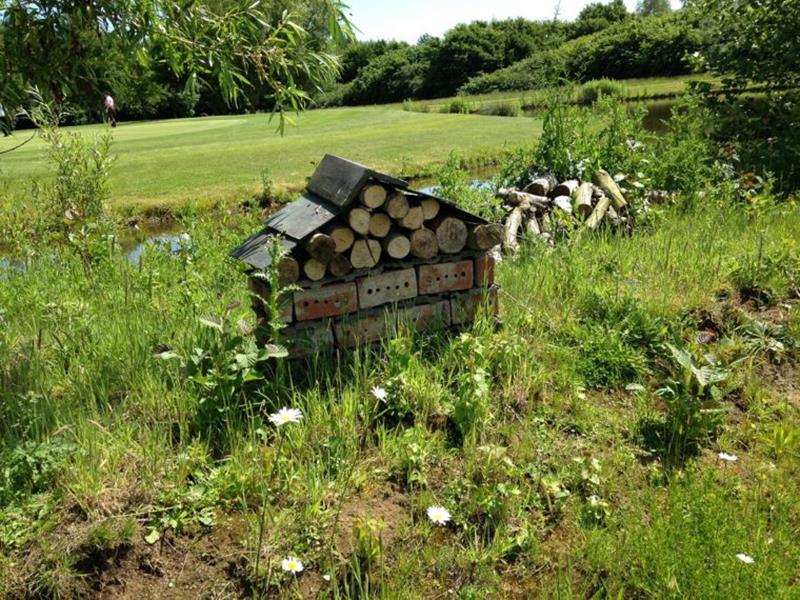I have just found that in the last couple of years there is a severe decline in the number of such pollinators like wild bees, honeybees. The bumblebee numbers have declined by 70% over the past 40 years with three species on the verge of extinction and some disappearing altogether.
Just to understand their importance in our life the following stat will blow your mind. More than 80% of European crop types are directly dependent upon insects for their pollination. In the U.S. we can find similar difficulties and problems.
Unlike in case of honeybees, bumblebees’ and solitary bees’ biggest problem is the loss of suitable habitat. Another interesting fact about bumblebees and solitary bees is that they are able to collect nectar an pollen from a wide range of plants, including garden flowers.

What can golf courses do for saving pollinators?
Almost a year ago, I wrote about the organic garden of Medinah Country Club where I highlighted the trend of the popularity of organic food and healthier menu selection. In the very same article, I wrote that this country club plans to inaugurate its own bee colony. I assume it was partially for having organic honey, but also for easing the pollinator shortage.
There is an often-overlooked area when people are talking about how to save pollinators is our golf courses’ turfgrass area.
The results of the Syngenta-commissioned Player Survey show that most of us welcome natural looking golf courses where we can enjoy wildlife and birds. Even the support for environmental protection steps is significant.

The building of beehives and planting wildflowers should not be an issue for a golf club. It would be really nice if more and more golf clubs could attract more rare bees, birds, and other small mammals.
If you exam the idea from golf course operations and maintenance perspective, then you will see that it requires less time-consuming maintenance to continually cut and clean dense rough.
Those golf clubs (e.g. Coventry Golf Club a GEO Certifed members-owned club) who are already paying attention to the above-mentioned phenomenon they selected areas of their golf courses that are out of play.
Just to give you a few ideas:
- Deep rough,
- Tee surrounds,
- Around the lakes and water features etc.
Participating in projects like Syngenta’s Operation Pollinator (93 clubs in the UK are already participating in this program designed by Sports Turf Research Institute) can improve your golf club’s reputation and its engagement with the local community (e.g. schools). As we are striving to become more environmentally and health conscious such bold initiative can attract more people to your golf clubs.
At this moment, I have not found any other similar program to Syngenta’s Operation Pollinator. The nearest was Bayer’s FeedABee program, but it is a more generic program.
Needless to say, this requires training our superintendents and of course the golfers on the importance of pollinators.
